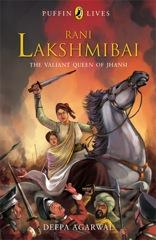
THE name Rani Lakshmibai or Jhansi ki Rani, as she was more popularly known, evokes memories of a quick paragraph in stuffy history textbooks. We know that she was brave, that she was one of the few women known to history who fought the British fearlessly, that she died a martyr, and that her name is inextricably linked to India's freedom struggle. So one wonders, what could possibly fill 125 pages of a book on the Rani's life? A lot, as Deepa Agarwal reveals!
The book is a chronological account of the Rani's life, starting from her precocious childhood, her unexpected wedding into a royal family, her innate talent for state affairs and administration, her discipline and physical rigour, to the 1857 Indian Mutiny, her visceral understanding of military strategy, her compassion, her despair, and most of all, her love for Jhansi that almost always leads the way.
As the events unfold in the Rani's life, you see what a pillar of strength she really was, and realise that adjectives like 'brave' or 'valiant' simply don't do enough justice to the Rani's undeniable charisma. The narrative, that is a little sluggish in the beginning with historical dates and characters, picks up steam by Chapter 4, and maintains the pace till the every end. Deepa's account, especially of the battle scenes with the British are extraordinary, giving us a clear picture of the electric atmosphere of Jhansi and India at the time.
Despite the scale at which this story is functioning with its many references and connections, Deepa never once compromises on the details. In fact, there are several little-known facts that surprise. For instance, during the first siege of the Indian rebels, the Rani surreptitiously supplied food for the British women and children trapped inside the Jhansi fort; or that during one of her weakest moments, she contemplates suicide.
For me, the only hitch in the narrative flow was the "history bug" that appears at the end of every chapter with nuggets of information. While the information itself was extremely informative, most times it did not go with the sequence of events being narrated, hampering the flow of the story. The 'Trivia Treasury' at the end, however, was most helpful.
At the end of the book, you realise that this isn't merely a character sketch of a historical figure, but a very human story of a woman who relentlessly rallied through one of history's darkest times.
Wish history textbooks would take a leaf out of this must-read 'Puffin Lives' series!